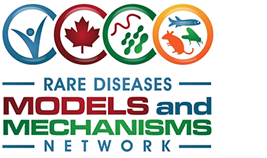How is a gene discovery application prioritized?
- The principal criteria for ranking applications is the quality of the genetic data implicating mutations in the gene as disease-causing, in which case, mutations in the same gene in unrelated patients with a similar phenotype will usually provide the strongest evidence (variants should be rare in the general population). In addition, applicants will be required to provide justification with respect to additional criteria which will be weighted according to: disease severity and medical need; potential therapeutic tractability; (possible) impact on a unique Canadian population; and novelty of the implicated biological pathway.
Are specific diseases prioritized or focus on a specific areas publicized?
- The intent of the Network is to catalyze research on rare diseases, so specific rare diseases are not prioritized by the Network. However, the Network is open to receiving designated funds from rare disease groups interested in utilizing the Network process to enable research in a targeted disease area. If such funds are made available, the Network will publicize this opportunity on the Network website.
What constitutes a rejected application?
- The most usual reason for the CAC to reject an application is the lack of adequate genetic data to support causality. Applications will also be rejected if it is deemed that the applicant is proposing study of a relatively common variant in the population. If a variant phenotype in a known gene is proposed, the applicant will have to justify that this is a distinct phenotype based on different pathogenic mechanism (eg. gain-of-function versus previously described hypomorphic mutations).
Under what circumstances might an application be put “on hold”?
- A key objective of the Network is to expedite collaborations between clinicians and basic scientists in model-based studies of rare disease genes. Although encouraging applications from clinicians determining genetic causes of disease in patients, the CAC accepts that there could be situations where a clinician may not be able to provide sufficiently detailed analysis of genetic data, whereupon the input of a molecular geneticist will be encouraged to build the case for consideration.
What happens when different clinical groups propose the same gene?
- The co-chairs will call the different groups to encourage a collaboration. This has proven to be an effective strategy in the Canadian FORGE and Care4Rare consortium. Clinician applicants should recognize that a collaborative project is more likely to lead to publication in a high ranking journal, given the fierce competition for publication and current criteria being set by journal editors.
If I come in with an established model organism/system partner, and the BIC Registry indicates that there are other model organism/system investigators working on the same gene in different systems, will I have to partner with other groups?
- The Scientific Advisory Committee (SAC) has the discretion to ensure that applicant’s model organism/system partner is credible and well-established. As up to 4 Catalyst projects will be funded for each clinical gene discovery application, the applicant will be provided with the Registry search information and encouraged to consider the value of interrogation of gene orthologues in different systems.
If I have developed and been studying a rare disease/gene model, can I apply for a catalyst grant?
- The Network is dedicated to providing funds that enable connections between clinicians and model organism/system scientists. A clinician investigator who has a lab and is conducting research in a gene area will be ineligible for funding.
If models are available (ie. from Jackson Labs) can I propose to access these model(s) in order to conduct the work proposed for a Catalyst grant?
- The Network wants to expedite elucidation of gene function and functional validation of human genetic variants that cause disease. Applications will be considered if you can make a credible case to import the model, and partner with a lab scientist with appropriate expertise to establish the proposed system in a timely fashion.






